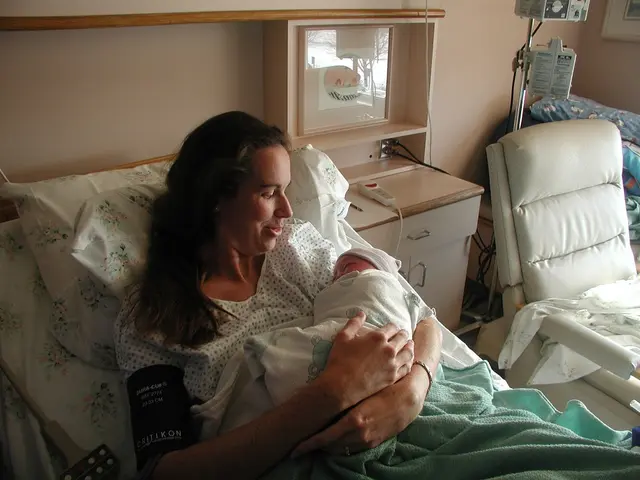Brain's Secret Protectors: Microglia Act as Shields in Neural Tissue
In the intricate labyrinth of the brain, a group of cells known as microglia have emerged as essential players in maintaining cognitive functions and overall brain health. Once thought of as passive support cells, these dynamic immune cells have been found to play distinct roles in brain development, homeostasis, and disease.
Originating from embryonic yolk sac progenitors, microglia migrate into the developing brain and differentiate under the influence of neural factors such as transforming growth factor-β (TGF-β). This unique gene expression profile sets them apart from other immune cells, with markers like Sall1, Hexb, and P2RY12 distinguishing them within the central nervous system (CNS).
Anatomically, microglia are strategically positioned throughout the CNS, making contact with neurons and synapses to monitor and maintain neural environments. They exhibit distinct morphological states, with ramified processes for environmental surveillance in a resting state and amoeboid or stellate morphologies when activated during injury or inflammation.
Physiologically, microglia serve multiple roles. They are responsible for immune surveillance, continuously scanning the CNS for disturbances and responding rapidly to injury or infection by producing pro-inflammatory cytokines. In addition, they interact with neural progenitors and synapses, influencing neurogenesis and synaptic remodeling through signaling pathways. Furthermore, they maintain CNS homeostasis by clearing debris and dead cells via phagocytosis, a process critical in aging and neurodegenerative diseases.
Microglia's roles extend beyond their physiological functions. In disease contexts, such as Alzheimer's disease, they contribute to the pathology by responding to amyloid plaques and other degenerative features. However, their dual role is evident, as they can help clear amyloid plaques and other toxic substances, but if over-activated, they can exacerbate inflammation and neuronal damage.
Beyond their role in neurodegenerative diseases, microglia are implicated in various mental health conditions, including depression and schizophrenia. Alterations in microglial function and neuroinflammation may be linked to the pathophysiology of these disorders.
In response to brain injury or disease, microglia migrate to the site of injury, become activated to manage inflammation, and start the healing process by engulfing and digesting dead cells, fighting off infections, and releasing cytokines that modulate the immune response.
Preserving the health of microglia through lifestyle choices like a balanced diet, regular exercise, and adequate sleep, and potential therapeutic interventions could help preserve cognitive function and delay the onset of age-related cognitive impairments. Moreover, drugs that can modulate microglial activity are being explored as potential therapeutic interventions for various neurological and psychiatric conditions.
In conclusion, microglia are now understood as essential, multifunctional immune cells of the brain, maintaining distinct anatomical and physiological characteristics crucial for CNS health and disease response. As research continues to unravel the mysteries of these cells, their potential as targets for therapeutic interventions in various neurological and psychiatric disorders becomes increasingly evident.
- The study of microglia is vital for understanding brain health and cognitive functions, as these cells play essential roles within the brain's intricate labyrinth.
- Central to learning and memory, microglia influence neurogenesis and synaptic remodeling, contributing to the development, homeostasis, and plasticity of the brain.
- Neuroscience and medical-health professionals are intrigued by the potential of microglia in promoting health-and-wellness and managing various mental health conditions, such as depression and schizophrenia.
- As our knowledge of microglia evolves, new therapeutic opportunities have emerged, with a focus on drugs that can modulate microglial activity to treat neurological and psychiatric disorders.
- To preserve cognitive function and delay age-related cognitive impairments, it's recommended to maintain a balanced diet, engage in regular exercise, and ensure adequate sleep to support the health of these crucial cells.
- In the face of brain injury or disease, microglia migrate to the site of injury, becoming activated to manage inflammation and initiate the healing process through phagocytosis, immune response modulation, and clearance of toxic substances.
- In the complex landscape of brain health, microglia's dual roles, both beneficial and potentially harmful, highlight the need for further investigation and the development of effective therapeutic strategies.
- The ongoing exploration of microglia, their anatomical, physiological, and functional characteristics, promises to deepen our understanding of neuroplasticity, cognition, and the intricate dance of neurons, synapses, and immune response in the brain.




